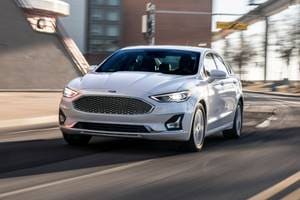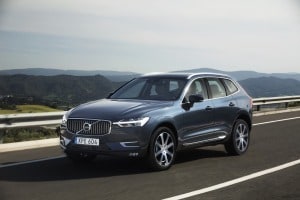Know Before You Buy
Market Segment
Although there are exceptions, most hatchbacks are variants of four-door sedans. As such, most of the entries in the subcompact and compact hatchback segments mirror those of sedans. We also recommend performance and hybrid and EV models in our buying guide.
Price
Although some luxury cars such as an Audi A7 or Porsche Panamera technically have hatchback trunklids, they aren't really what most people would consider a hatchback. You can expect conventionally powered subcompact and compact hatchbacks to range in price from the low teens to the low $30,000s when loaded. Performance hatchbacks can hit $40,000 as can hybrids and EVs before government tax credits.
Performance & MPG
Given that hatchbacks reside in the subcompact and compact categories, the four-cylinder gasoline engine is the primary powerplant of choice, even among performance models. Some have thriftier three-cylinder engines, however. Either way, look for fuel economy of around 30 mpg combined or better. As for hybrids and EVs, fuel economy is quite obviously superior, and make sure to compare the different all-electric driving ranges.
Safety
Family shoppers should find features such as front-seat side airbags and full-length side curtain airbags as standard on every model. Rearview cameras are also increasingly standard, and high-tech electronics that warn inattentive drivers of blind-spot intrusion and impending collisions have migrated from strictly the luxury realm down to mainstream brands. Shoppers should also be aware of crash test scores produced by the government and the Insurance Institute for Highway Safety.
Features
Features such as rearview cameras, automatic climate control, smartphone interfaces, keyless start systems and Bluetooth capability are now often standard on hatchbacks. Meanwhile, amenities such as leather seating, heated seats, advanced infotainment systems and accident avoidance technologies are usually optional. Beyond checking out features lists, keep an eye open for differences in the number and type of seat adjustments and unique storage solutions.
Interior
Much like their sedan counterparts, hatchbacks should be able to seat four adults in comfort. If you need more space than a compact hatchback provides, you'll likely need to step up to a midsize sedan or a compact SUV.
Cargo Space
There are two things to consider about a hatchback's cargo capacity: the amount of space behind its backseat and the amount of space when that seat is folded (aka maximum cargo capacity). It's not a given that a hatchback will be generous with both because the slope and shape of its hatchback can determine just how versatile the cargo area really is. Therefore, it's important to bring along bulkier items you frequently store in the trunk during back-to-back test drives.
All-Wheel Drive
Few non-performance hatchbacks have all-wheel drive, but there are exceptions (see Subaru). If you're looking for a wider variety of all-weather choices, a different body style might be in order.
Transmission Types
Though traditional manual transmissions with clutch pedals are still recommended for sport sedans, several kinds of automatics are now offered. The conventional automatic can be shifted manually with either a lever on the center console or paddles on the steering wheel. Dual-clutch automatic transmissions used to be the stuff of exotic sports cars, but now they've found their way into economy cars for their ability to maximize the power potential and fuel efficiency of low-powered engines. Such transmissions can operate just like a normal automatic or make manual shifting (via paddles or gear lever) quicker and more responsive. The downside is that shift quality is generally less smooth. Finally, there's the continuously variable transmission (CVT), which automatically selects from an infinite number of ratios to keep the engine operating most efficiently.
Cost to Own
Hatchbacks should be no more or no less expensive to run their sedan counterparts. Of course, the hybrid ones will come with a lower fuel bill, and EVs have fewer mechanical parts to break and replace.





